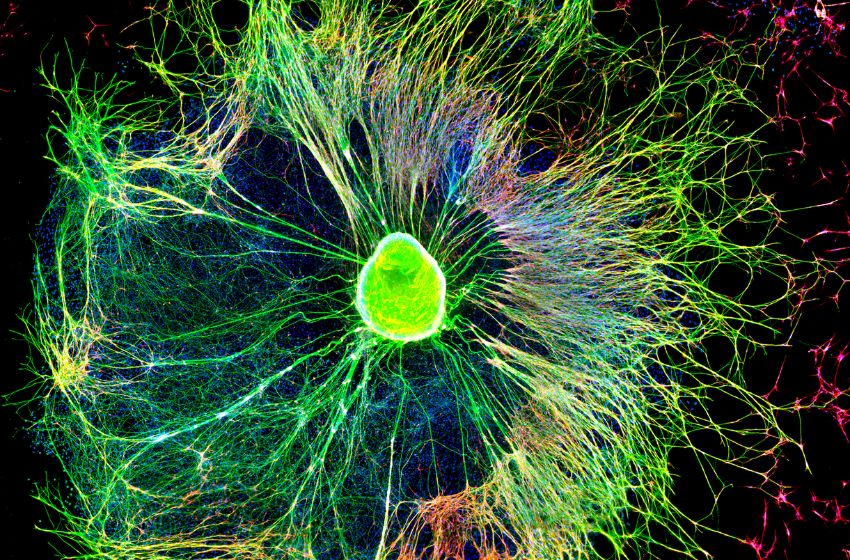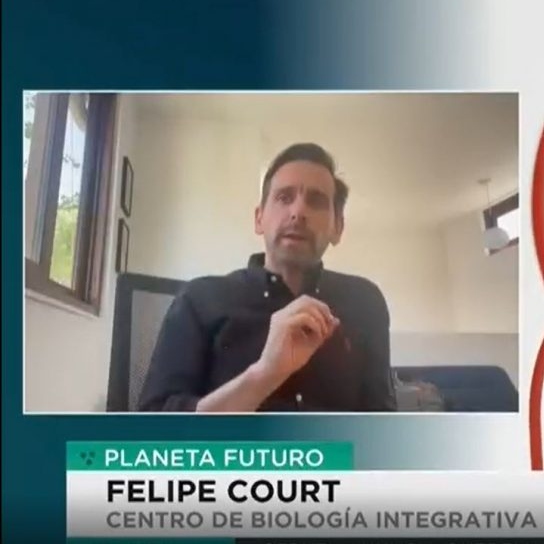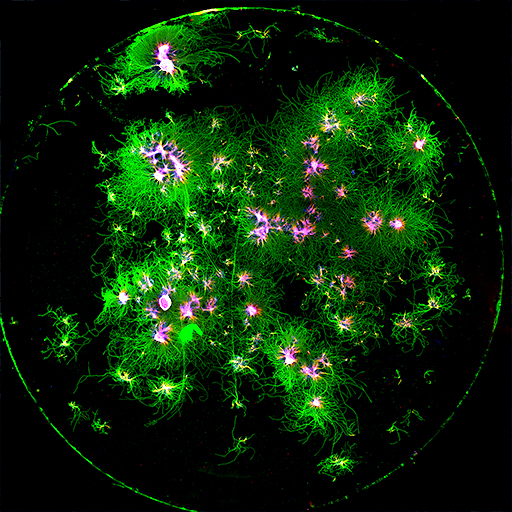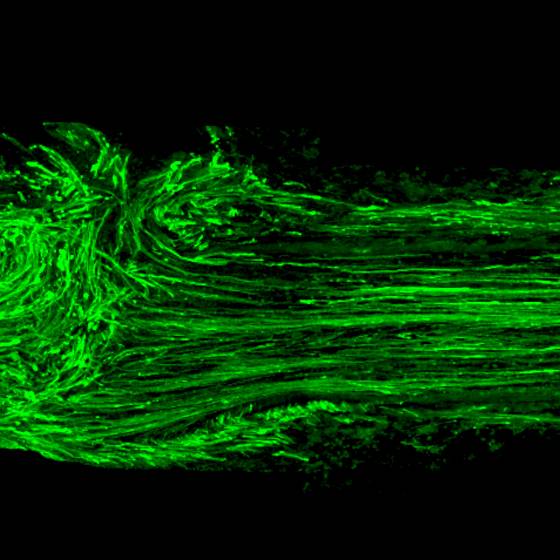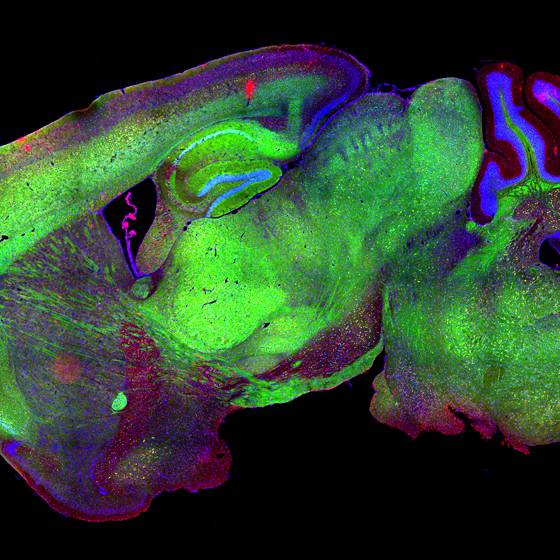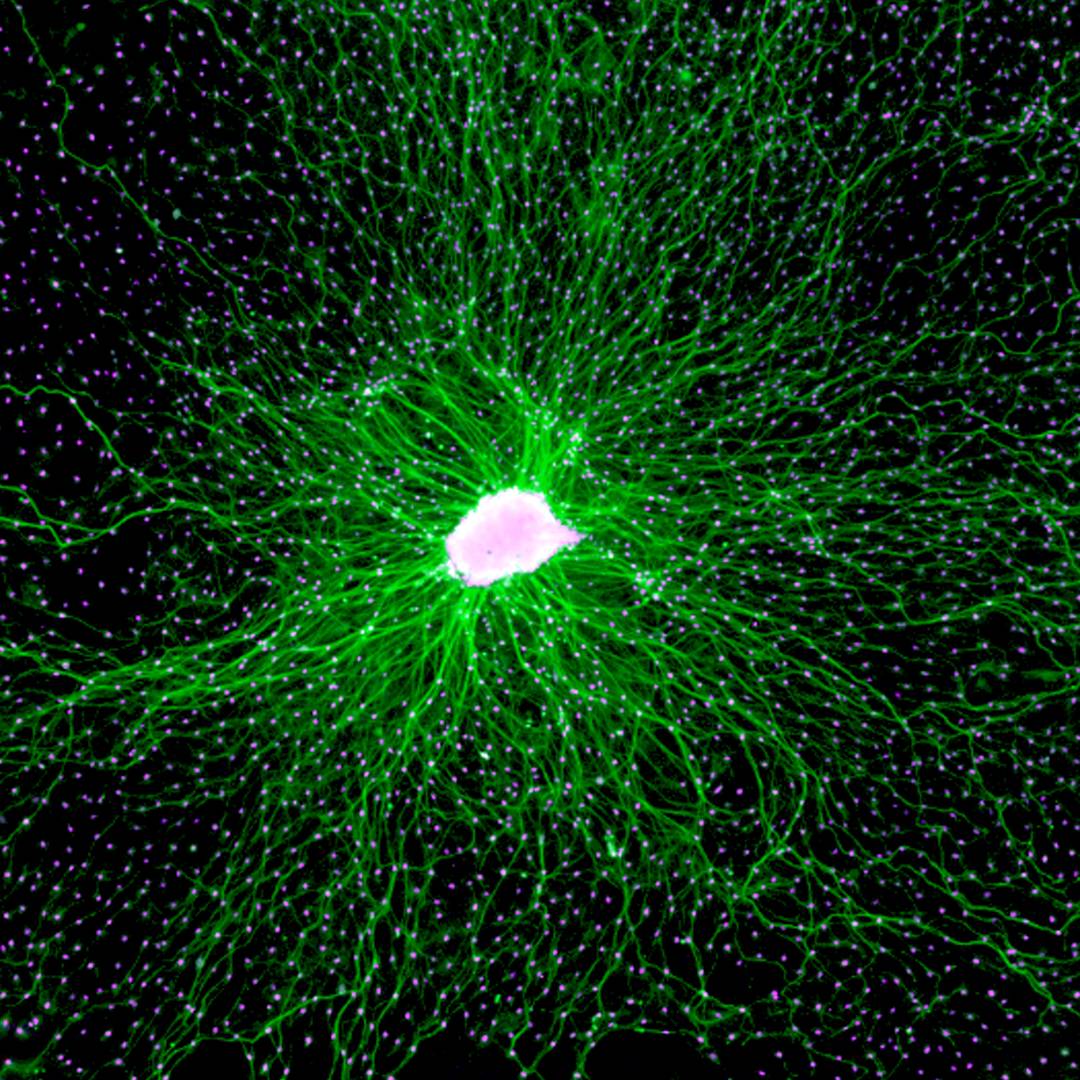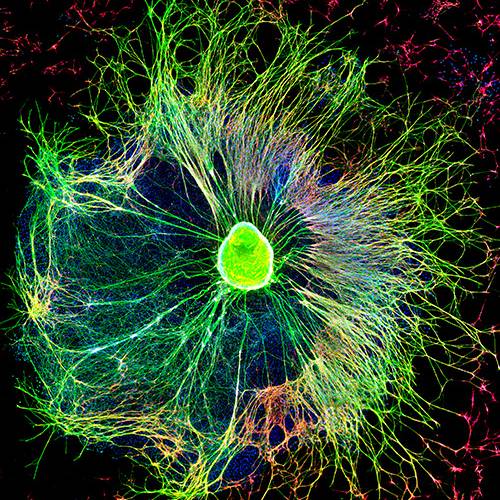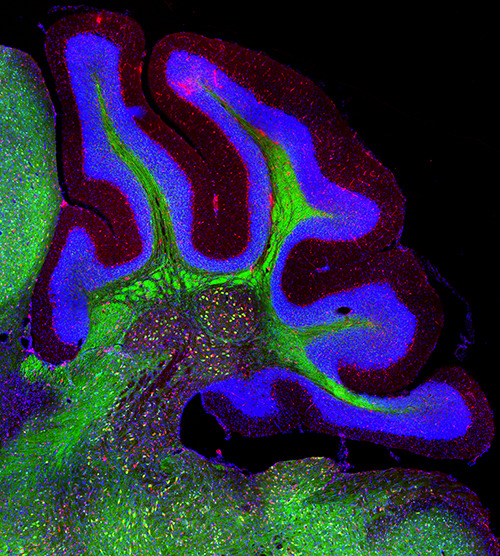Schwann cell regulation of axonal regeneration
In the mammalian nervous system, the regenerative capabilities of neurons show regional variability. In the peripheral nervous system (PNS), axons efficiently regenerate after nerve damage associated to the pro-regenerative effect of Schwann cells. In contrast, in the central nervous system the regenerative capability is poor due to both neuronal intrinsic limitations and glial responses that restrict regeneration. Although, axonal regeneration in the periphery show good regenerative capacity in preclinical models, it still represents a clinical problem associated to delayed repair of peripheral nerves, and the negative effects of aging and other conditions, including diabetes, for axonal regeneration and functional recovery. In the lab, we study how Schwann cells reprogramming regulates axonal regeneration after nerve damage, in order to manipulate this response to enhance axonal regeneration.
Longitudinal section of a sciatic nerve, with regenerating axons crossing a surgically repaired region, axons are labelled using an antibody against the protein SCG10.

Schwann cell exosomes enhance axonal regeneration
In the peripheral nervous system, regeneration of injured axons depends on the reprogramming of Schwann cell from a differentiated phenotype into a phenotype known as repair Schwann cells. Our lab was the first to demonstrate that Schwann cell exosomes enhanced axonal regeneration in vitro and in vivo in laboratory animals, an effect we later showed was dependent on the reprogramming of Schwann cells into a repair phenotype, and associated with the loading of specific miRNA into exosomes and their transfer to axons. In addition, we are exploring the effects of aging, chronic denervation and diabetes in Schwann cell reprograming and axonal regeneration, in order to develop interventions to enhance axonal regeneration in these conditions.
People involved

Daniela Rebolledo
Senior Research Assistant

I am a Biochemist from Pontificia Universidad Católica de Chile (PUC) and PhD in Cell and Molecular Biology from the same university. My PhD thesis research was performed at the Physiology and Biophysics department, University of Washington. My research has focused on the physiology of the neuromuscular system and the pathological mechanisms behind neuromuscular disorders of diverse etiology.

Karina Girardi do Carmo
Postdoctoral fellow

Biologist, Ph.D., and MSc in Cell and Molecular Biology from Oswaldo Cruz Foundation (Fiocruz/RJ). Studying age-dependent decline of regenerative capacity in the peripheral nervous system. Mainly focusing on the contribution of metabolic profile of aging Schwann cells in senescence and particularly exploring the epithelial-mesenchymal transition (EMT) like process.
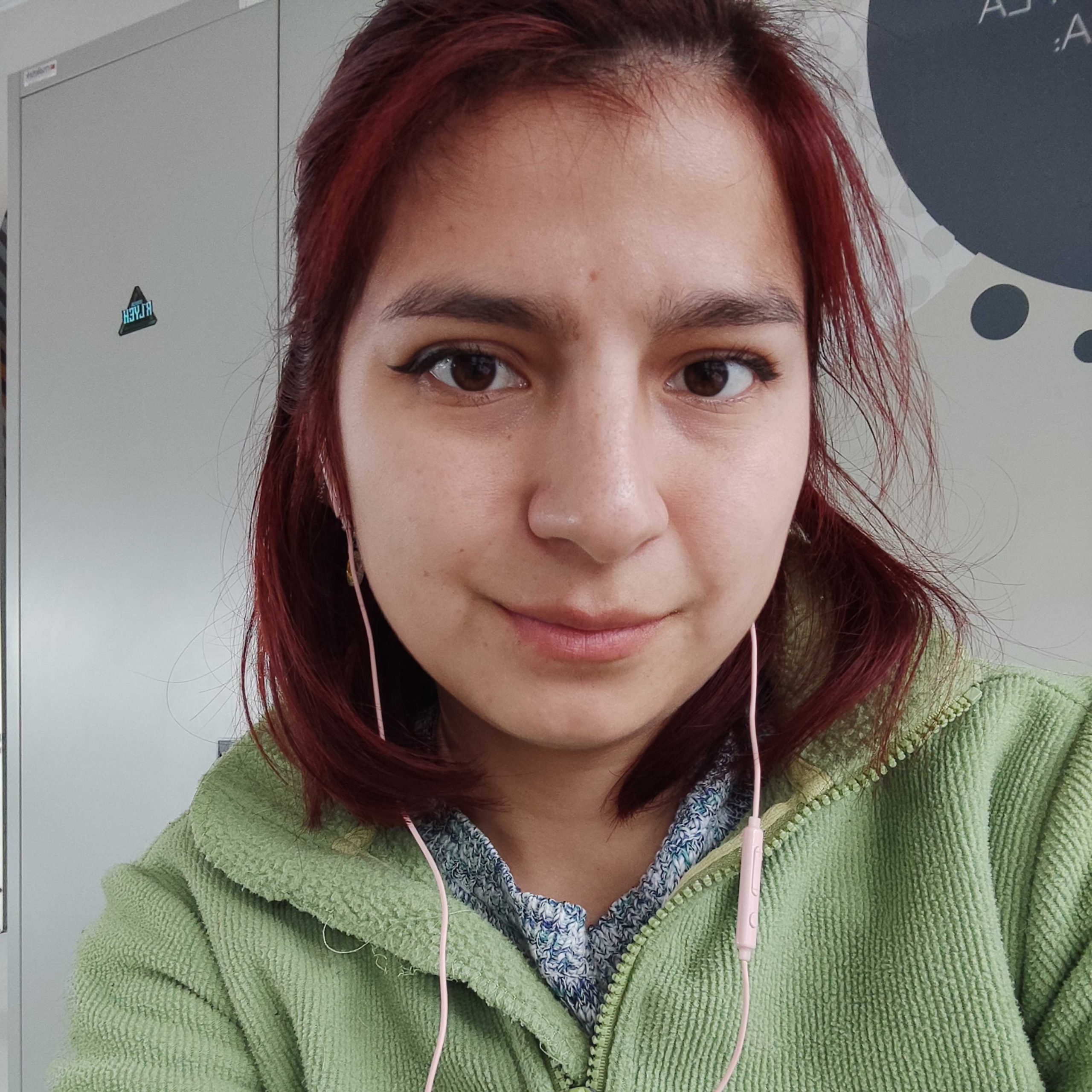
Renata Gallardo
Research Assistant

I studied Medical Technology at the Universidad Mayor acquiring knowledge in histological techniques, immunohistochemistry and immunofluorescence. I am interested in learning more from the world of neurosciences and related pathologies to find new treatments to improve the quality of life in aging.
Related Publications
PUBLICATIONSReviewNervous System FxPNS
octubre 5, 2021
Schwann Cell and Axon: An Interlaced Unit-From Action Potential to Phenotype Expression.
Court FA, Alvarez J.
Adv Exp Med Biol. 2016;949:183-201. doi: 10.1007/978-3-319-40764-7_9.
PMID: 27714690
PUBLICATIONSReviewNervous System Fx
octubre 5, 2021
Origin of Axonal Proteins: Is the Axon-Schwann Cell Unit a Functional Syncytium?
López-Leal R, Alvarez J, Court FA.
Cytoskeleton (Hoboken). 2016 Oct;73(10):629-639. doi: 10.1002/cm.21319. Epub 2016 Sep 10.
PMID: 27490284
PUBLICATIONSDataPNSNeuroRegeneration
octubre 5, 2021
Activation of the unfolded protein response promotes axonal regeneration after peripheral nerve injury.
Oñate M, Catenaccio A, Martínez G, Armentano D, Parsons G, Kerr B, Hetz C, Court FA.
Sci Rep. 2016 Feb 24;6:21709. doi: 10.1038/srep21709.
PMID: 26906090
PUBLICATIONSDataNervous System FxPNS
octubre 5, 2021
Axons Provide the Secretory Machinery for Trafficking of Voltage-Gated Sodium Channels in Peripheral Nerve.
González C, Cánovas J, Fresno J, Couve E, Court FA, Couve A.
Proc Natl Acad Sci U S A. 2016 Feb 16;113(7):1823-8. doi: 10.1073/pnas.1514943113. Epub 2016 Feb 2.
PMID: 26839409
Related News
Michael J. Fox Foundation apoya al CIB U. Mayor para avanzar en nueva terapia para el tratamiento del Parkinson
mayo 12, 2023
Felipe Court y Macarena Arrázola dirigirán un segundo estudio financiado por la organización estadounidense que combina métodos farmacológicos y genéticos para avanzar en nuevas técnicas que…
Planeta Futuro: Terapia génica para la visión.
mayo 10, 2023
Un grupo de científicos ven el envejecimiento no como algo natural, como algo inevitable, sino como una enfermedad y como tal se podría curar. Ellos vienen trabajando hace muchos años en terapias…
